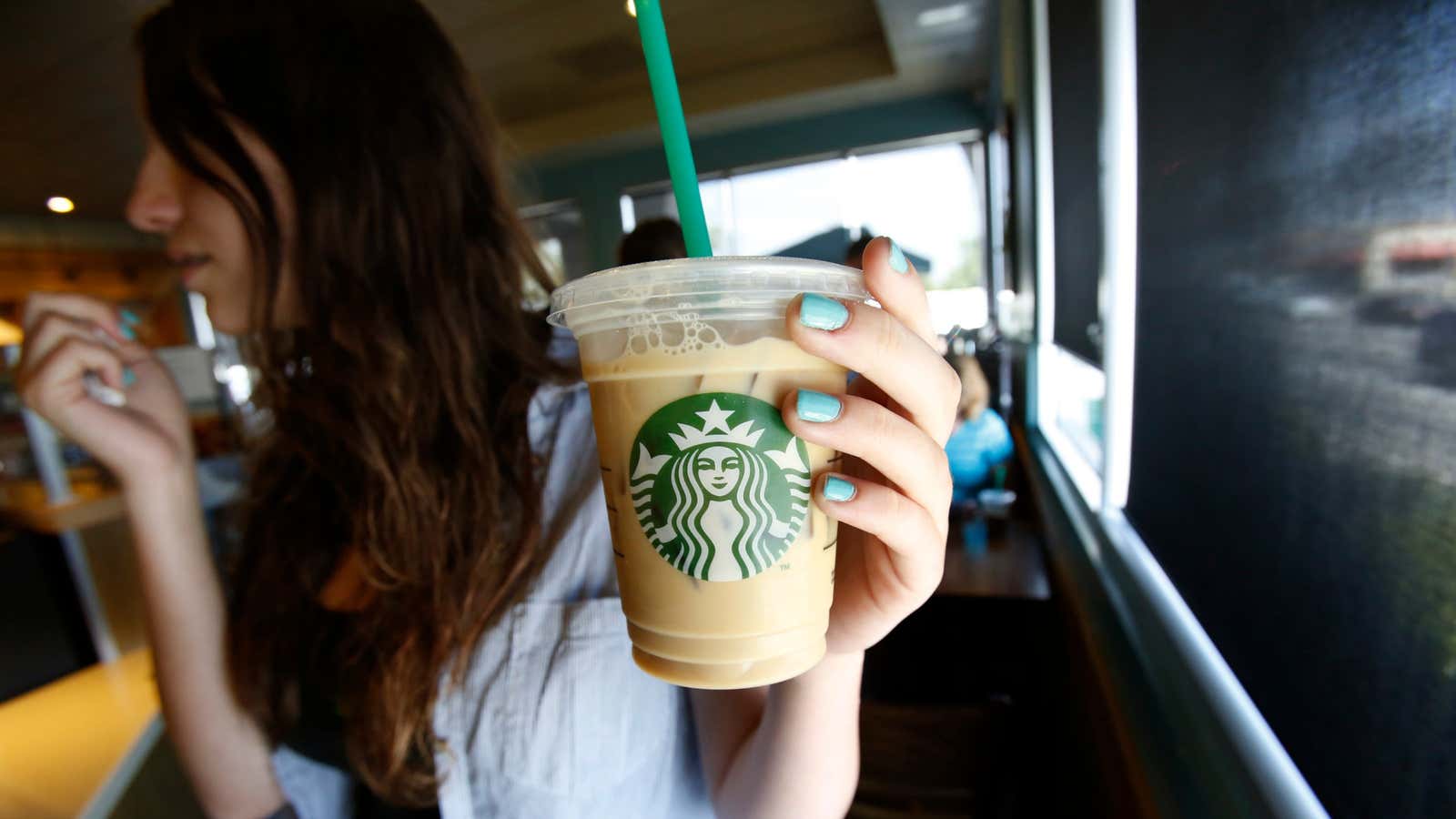You can’t get a cup of coffee at Starbucks’ new store. The coffee-shop giant opened its first tea bar today (Oct. 24), under the Teavana brand which it bought last year, and it’s an espresso-free zone.
Just like it did with coffee, Starbucks wants to make a full consumer experience out of tea. Noting that tea sales in America have grown by 16% over the past five years, according to the Tea Association of The USA, and the global tea industry is worth $90 billion according to Euromonitor, Starbucks figured it’s a good time to get into the tea game. “There’s a huge opportunity in tea we haven’t taken advantage of yet,” said Chanda Beppu, strategy director at Teavana.
But judging by Teavana tea bar’s menu, pricing, décor and location, it’s not really—or at least, not only—about the tea.
For one thing, Starbucks already sells tea—27 loose-leaf choices, to be exact. Tea has been on the Starbucks menu since it first opened its doors in 1971 in Seattle, when it was named “Starbucks Coffee, Tea and Spices.” It’s been 14 years since the chain bought Tazo tea, which you can buy in various forms in Starbucks stores, and two years since it announced its acquisition of Teavana. And in case you needed reminding, nobody had heard of a Chai Tea Latte until Starbucks invented it.
So why is it now launching a competitor? And with what can sometimes seem like a Starbucks on almost every corner, why risk draining customers from its coffee houses to its tea rooms?
The answer might be in the price. A 16oz chai tea latte at Starbucks costs $4.05, but will set the customer back $4.95 at Teavana. That’s a 22% uptick. The most expensive drink on Teavana’s menu is 25% pricier than the costliest drink of the same size at Starbucks.
Other menu items at Teavana tea bar are similarly a cut above your average Starbucks sandwich. They include lemongrass ginger chicken rice balls for $7.95, shiitake mushroom and kale flatbread (served with dressing-drizzled green leaves) for $8.95, and an assortment of salads for up to $14.95. These hardly seem aimed at your black-turtleneck-and-jeans, coffee-fueled customer.
Unlike Starbucks’ crowded hubs of noisy activity, the Teavana tea bar is calm and spacious, with just three small teardrop-shaped rustic wooden tables and large prints of pink and orange blossoms on the soothing gray walls. And the first one is located in New York’s swanky Upper East Side, on 85th Street and Madison Avenue.
“We chose New York purposefully,” said Beppu. “It’s a culinary, trend-forward town,” and its typical local is health-conscious, socially-active and purse-heavy. But it seems that, having all but saturated the mainstream, Starbucks is also trying to tap into a classier, more upscale market.
